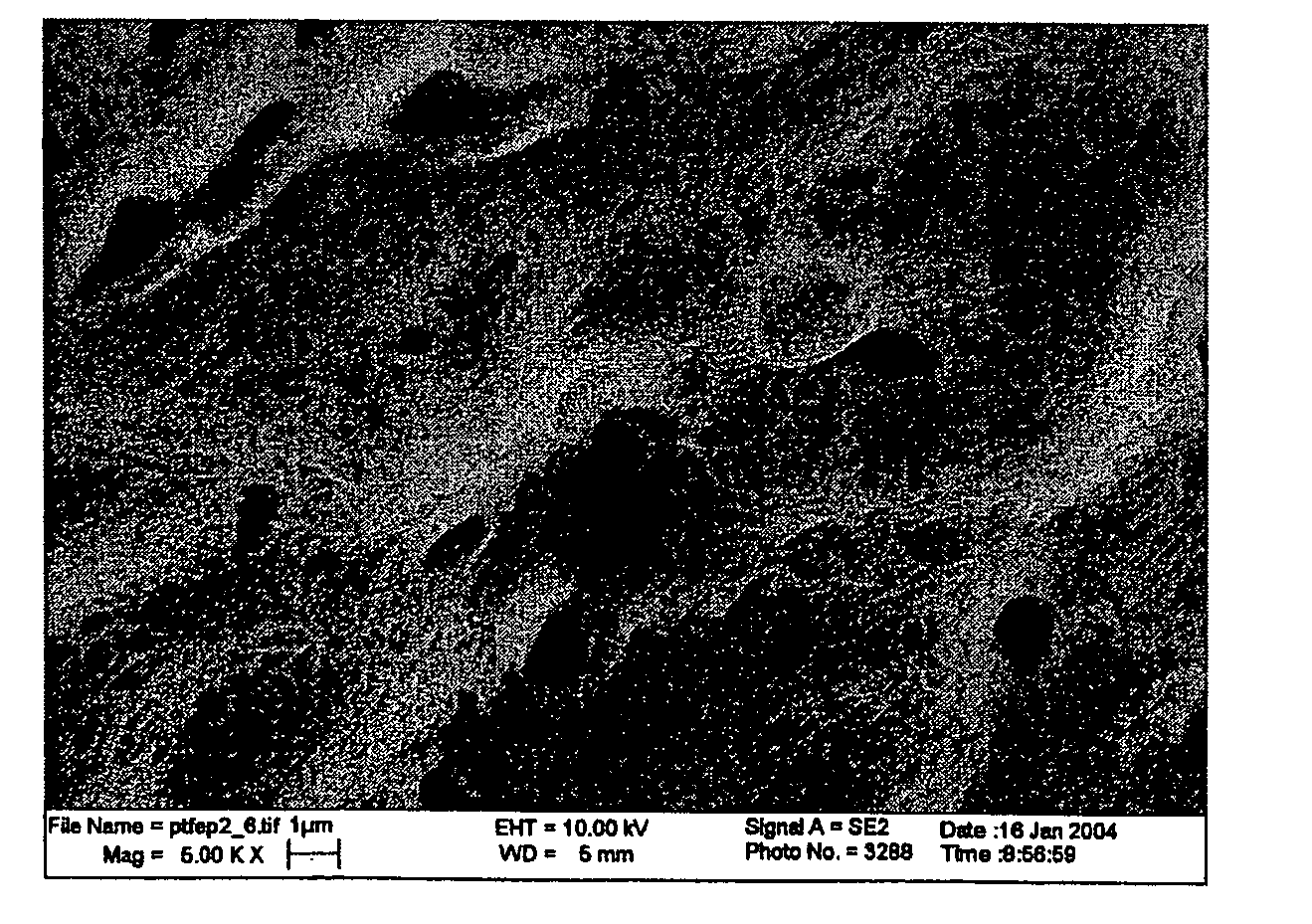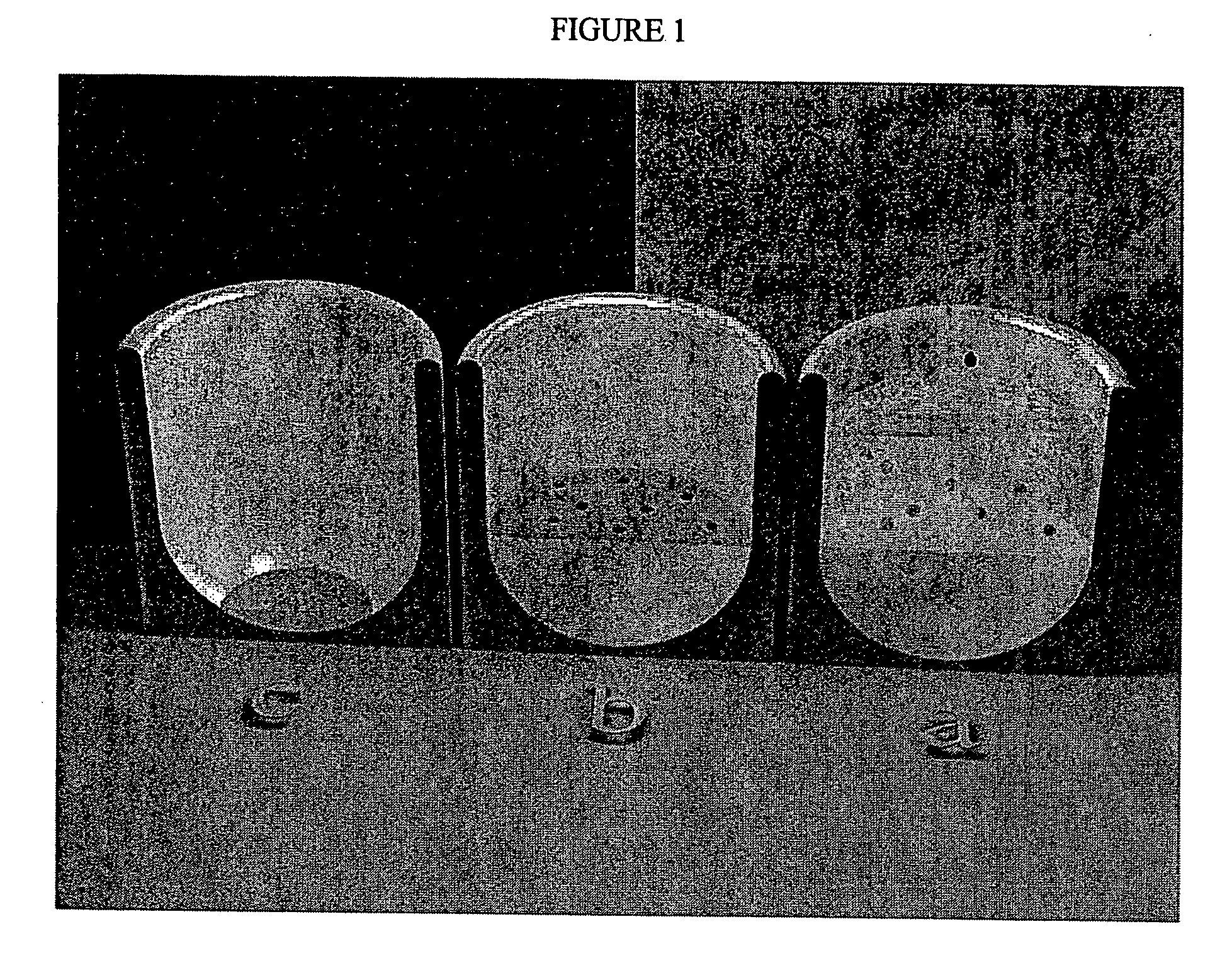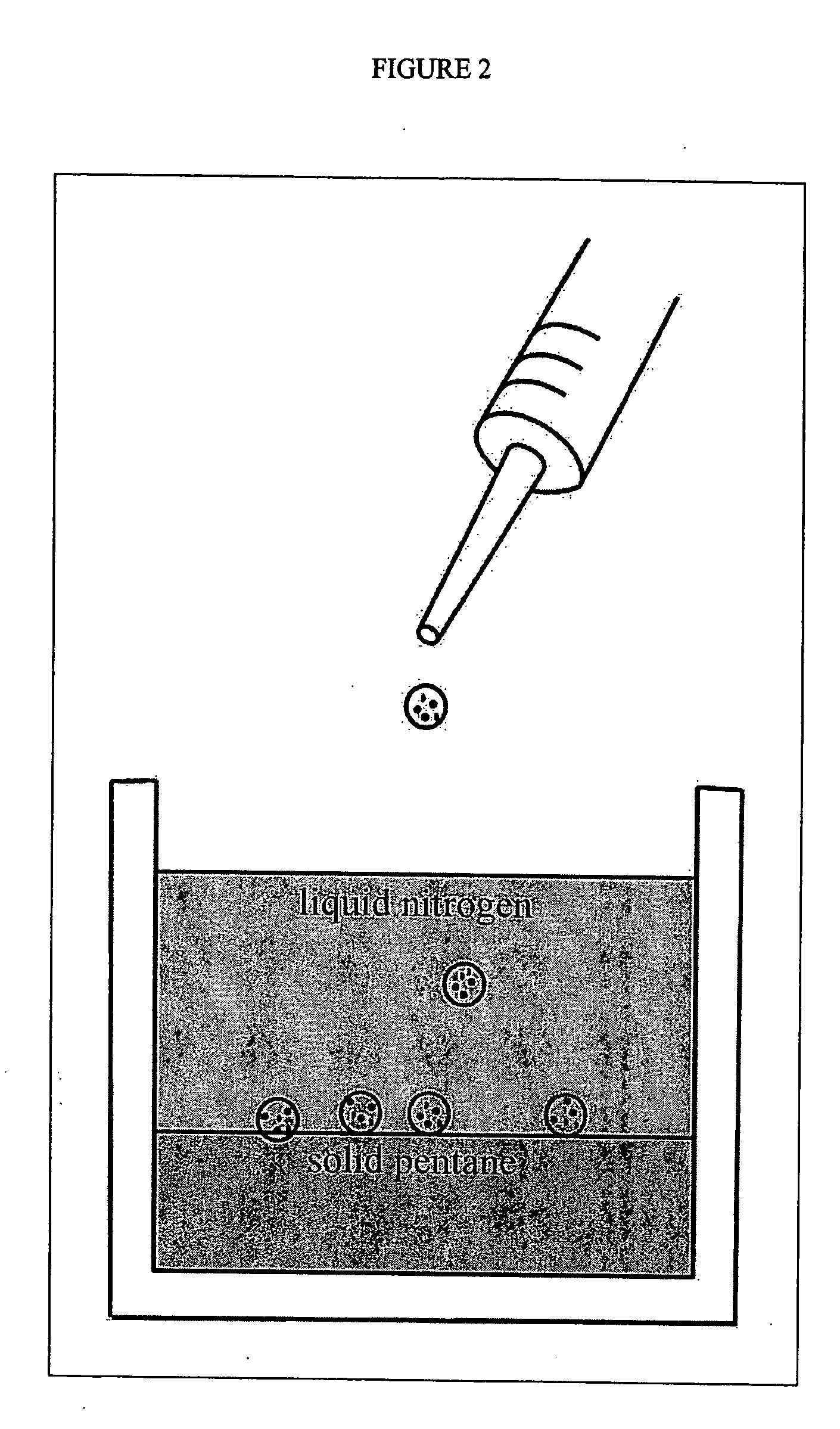Loadable polymeric particles for therapeutic and/or diagnostic applications and methods of preparing and using the same
a technology of polymeric particles and therapeutic applications, which is applied in the field of loading polymeric particles for therapeutic and/or diagnostic applications and methods of preparing and using the same, can solve the problems of irritating the tissues with which they come in contact, causing adverse immune reactions, and particles used in medical applications, and achieves the effect of minimizing agglomeration
- Summary
- Abstract
- Description
- Claims
- Application Information
AI Technical Summary
Benefits of technology
Problems solved by technology
Method used
Image
Examples
example 1
[0086] Microspheres having a diameter of approximately 500 to 600 μm were prepared. First, a polymer solution was prepared by dissolving PTFEP polymer of a molecular weight 3×106 g / mol in the polymer solvent ethyl acetate to obtain a 2% (wt / v) polymer solution. Four milliliters of this polymer solution was manually dripped into liquid nitrogen using a 5 ml syringe. This dispersion was dispensed onto a frozen layer of 150 milliliters of pentane. (See FIG. 2.) The cryoextraction was allowed to proceed for three days. Subsequently, polymeric particles were retrieved from the reaction vessel, and were air dried at 21° C.
example 2
[0087] Microspheres having a diameter of approximately 350 to 450 μm were prepared. First, a polymer solution was prepared by dissolving PTFEP polymer of a molecular weight 3×106 g / mol in ethyl acetate to obtain a 1% (wt / v) polymer solution. Four milliliters of this polymer solution was manually dripped into liquid nitrogen using a 5 ml syringe. This dispersion was dispensed onto a frozen layer of 150 milliliters of pentane. (See FIG. 2.) The cryoextraction was allowed to proceed for three days. Subsequently, polymeric particles were retrieved from the reaction vessel and were air dried at 21° C.
example 3
[0088] Microspheres having a diameter of approximately 500 to 600 μm were prepared. First, a polymer solution was prepared by dissolving PTFEP polymer of a molecular weight 12×106 g / mol in methylisobutylketone to obtain a 2% (wt / v) polymer solution. Four milliliters of this polymer solution was manually dripped into liquid nitrogen using a 5 ml syringe. This dispersion was dispensed onto a frozen layer of 150 milliliters of a 1:9 (v / v) ethanol / pentane mixture (See FIG. 2.). The cryoextraction was allowed to proceed for three days. Subsequently, polymeric particles were retrieved from the reaction vessel, and dried under reduced pressure at 21° C.
PUM
| Property | Measurement | Unit |
|---|---|---|
| diameter | aaaaa | aaaaa |
| diameter | aaaaa | aaaaa |
| sizes | aaaaa | aaaaa |
Abstract
Description
Claims
Application Information
 Login to View More
Login to View More - R&D
- Intellectual Property
- Life Sciences
- Materials
- Tech Scout
- Unparalleled Data Quality
- Higher Quality Content
- 60% Fewer Hallucinations
Browse by: Latest US Patents, China's latest patents, Technical Efficacy Thesaurus, Application Domain, Technology Topic, Popular Technical Reports.
© 2025 PatSnap. All rights reserved.Legal|Privacy policy|Modern Slavery Act Transparency Statement|Sitemap|About US| Contact US: help@patsnap.com



